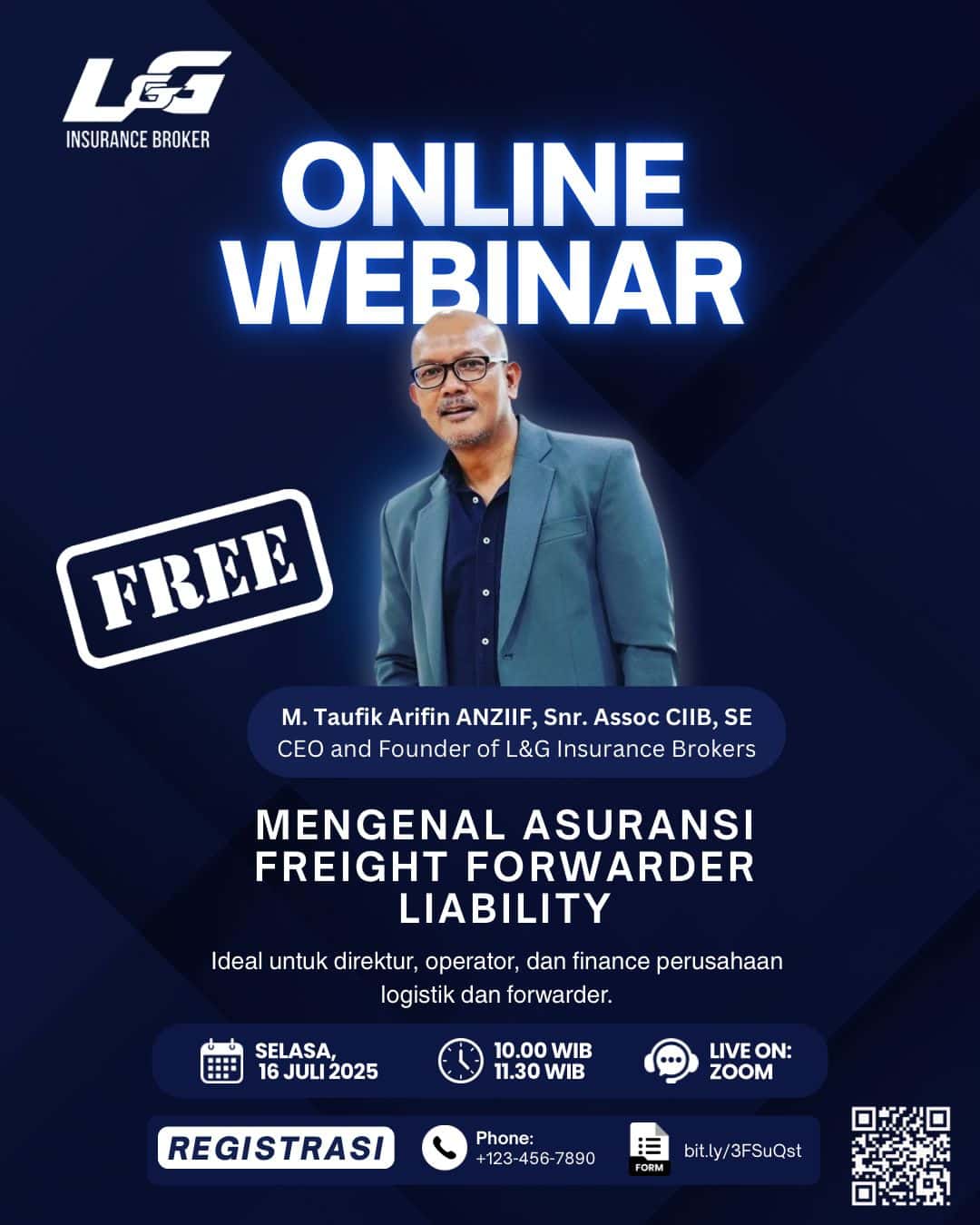Liga Asuransi – Dear readers, how are you? There are so many important things to know about the construction industry. Therefore, this time we still want to discuss construction issues.
According to experience, in every project, there is always a risk that threatens the project.
One of the main things in the construction process is the presence of a contractor as the executor of a construction project.
As an insurance broker focused on Engineering, Procurement, and Construction (EPC) we need to fully understand the construction process and the parties involved in it.
If you are interested in this article, please share it with your colleagues so that they also understand you.
What Is Contractor Risk in Construction Management?
A general contractor (GC) usually oversees a construction site and manages the work of subcontractors. A GC also manages the vendors and trades associated with the construction project. They serve as a central communication point between all involved parties.
That means the general contractor must have his own risk mitigation process that works jointly with the construction project manager. They must conduct risk identification and analysis throughout the project and have a risk management plan in place.
What Is Contractor Risk Management?
Contractor risk management is the process of identifying, assessing, and controlling the risks associated with an organization’s contractors. It is used to manage the work of general contractors and subcontractors.
Risk is part of any construction project, but managing that risk becomes more difficult when that risk is shouldered by independent contractors, not under the full authority of the organization.
How to Prevent Risks
Two factors are fundamental in preventing the risks that arise when a contractor is hired: the contracting policies of the company and the attitude of the project manager.
The contracting policies of the hiring company can cause many constraints in the project manager’s work (e.g., many companies always hire the contractors that offer the lowest prices, without analyzing their structure or experience).
The project manager plays a decisive role in the contracting and management of contractors, and therefore must always use the best practices that can help to reduce risks.
Contract Planning
One of the first problems faced by a project manager when hiring a contractor is also often one of the biggest obstacles throughout the whole project: lack of time! Many times, the construction needs to start instantly after the signing of the contract, obliging the hiring company to select only those contractors that can start immediately.
As many companies do not have an updated list of prequalified contractors, this lack of time in the initial preparation can cause failure in the contracting.
To start a contract off the right way, it’s first necessary to reserve enough time to prepare for the contracting process. It’s necessary to define what exactly will be contracted and in which way, to decide how many contractors will be asked to give a quotation, and to prepare the detailed scope that will accompany each one of the contracts.
Selecting Contractors
Once the scope is defined and the selection criteria agreed upon, the moment of hiring the contractors comes. Beginning with the contractors’ proposals, the project manager and his or her team must select the contractors based on the advantages and risks that each one can bring to the project.
It’s also important to check the references from previous work by the contractor: (1) to see if any of their previous work was similar in size, complexity, and quality of finish to the current project; and (2) to certify that the relationship between the contractor and the contracting company was good and find out if the contractor gave assistance and guarantees in cases of construction issues.
The contractor’s price should not be treated as the only criteria for the contracting process. It is certain that the price is important and that a project manager will always be trying to get the best financial result for his or her company.
Normally, the problem is that the price ends up being the ONLY criteria used in practice when hiring contractors. The hiring company believes that the savings from the lower price compensate for the risk taken—a decision that’s often wrong.
Heightened awareness of risks
By creating a better working relationship between the general contractor and the subcontractor and utilizing good management practices and effective legal support, the project leader will have a heightened awareness of the possible risks and their consequences, be it for the project and/or the company. Awareness of the risks entailed in your project is the first step towards acting to avoid them.
The process of hiring, subcontractors do not turn into a torturous experience for the general contractor, the project manager, together with his or her team, needs to give them adequate time to complete the hiring process correctly. Not following some of the essential steps before hiring subcontractors, can significantly increase the risk exposure of the project.
4 Common Risk Factors on Construction Projects
All construction projects carry some level of risk. Being able to identify and manage risks requires skill, careful planning, and being ability to make good decisions quickly. When risks become reality, they can be detrimental to the successful completion of your project. Properly managed risks can lead to higher profits, stronger relationships with clients, and the ability to grow and expand your business.
Here are four common risk factors to watch out for on construction projects along with tips on how to properly manage them and prevent them from derailing your project.
- Health & Safety Hazards
Keeping workers safe should be the top priority on every Jobsite. Site conditions can change rapidly, and unexpected hazards can crop up at any time creating unexpected project risks. Major accidents can result in serious injuries or fatalities to your employees. Your goal on every project should be to be accident-free and ensure every worker goes home safe to their family.
In addition to the potential harm to workers, a serious accident can cause work to be stopped or delayed and lead to a decrease in productivity due to low morale among your workers. This can put your project, and your company, at huge financial risk due to all the costs associated with dealing with an accident.
It’s far cheaper to invest in training, engineering controls, and PPE to prevent accidents than it is to deal with the aftermath when one occurs. Make sure your subcontractors understand your commitment to safety and provide training to their employees before beginning work.
Before starting a project, hold a kickoff safety meeting with your employees and subcontractors. Cover the risks and hazards that will be present throughout each stage of construction. Make sure everyone has reviewed and understands the safety plan you’ve developed for the project.
- Subcontractor Default
Dealing with a subcontractor that fails to perform on a project is a major risk factor for general contractors on construction projects. A defaulting subcontractor that isn’t meeting its contractual obligations can completely wreck your project schedule and destroy your profit margin. Schedule delays can also impact other subcontractors and can result in costly rework.
No subcontractor starts a job with the intention of defaulting on the work. Subcontractors must front a substantial portion of the costs on a project before they start getting paid. This can quickly lead to cash flow problems if they overextend themselves by taking on too much work or payments on other projects are being delayed.
Replacing a terminated subcontractor or supplementing their uncompleted work can kill a project and hurt your company’s reputation. You might be better off working with them to solve any issues to complete the project rather than letting them go.
If a subcontractor is experiencing difficulties, they might not be upfront with you about the problem. Address any red flags with your subcontractor regardless of their performance. If you wait too long to confront a struggling subcontractor, you might not be able to recover.
- Change Orders
Change orders are an inevitable part of construction and can be a major risk factor when not managed properly. A change order is simply an addendum or amendment to the original construction contract or the scope of work. They can be initiated by the owner, general contractor, or subcontractors. They typically require performing additional work for reasons such as omissions or errors in the original scope of work or ambiguous construction drawings.
Increased project costs, delays in hitting contract milestones, interruptions of workflow, and not completing a project on time are some of the issues caused by poorly handled change orders. Managing change orders takes preparation, understanding, and lots of communication with all parties involved with the project.
Disagreements over what warrants a change order are common since they affect the different parties involved in different ways. Clarify any discrepancies or vague items in the scope of work or plans and specs. Make sure your subcontractors are clear on the work they’ve been contracted to complete. This can eliminate the need to change orders down the road.
- Other Construction Project Risks
Other risk factors common in construction projects include incomplete drawings and poorly defined scope, design errors, unknown site conditions, poorly written contracts, unexpected increases in material costs, and poor project management. Properly identifying and managing construction risks are key to completing successful and profitable projects.
The need for an insurance broker company as a risk management and insurance consultant
From the description above indeed the construction project faces so many risks. Therefore, it is necessary to have good risk management.
One of the best solutions is to utilize the services of an insurance broker company. Insurance brokers are insurance experts who also understand risk management, especially physical risks, which can provide input to project owners and contractors on how to overcome potential risks.
Arranging an insurance project is not easy. Insurance brokers will do risk analysis, design insurance policies, and place them with several insurance companies while negotiating the most competitive premium rates.
One insurance brokers that focuses on construction risk is L&G Insurance Broker. L&G has successfully provided insurance coverage for thousands of construction projects in Indonesia.
For all your project insurance needs, contact L&G right now!
Sources:
- https://www.constructconnect.com/blog/4-common-risk-factors-on-construction-projects
- https://www.projectmanager.com/blog/contractor-risk-management
- https://www.pmi.org/learning/library/reduce-risks-contractors-management-6985
—
Looking for Insurance Products? Don’t Waste Your Time and Contact Us Right Now
L&G HOTLINE 24 HOURS: 0811-8507-773 (Call – Whatsapp – SMS)
website: lngrisk.co.id
E-mail: customer.support@lngrisk.co.id
—
















